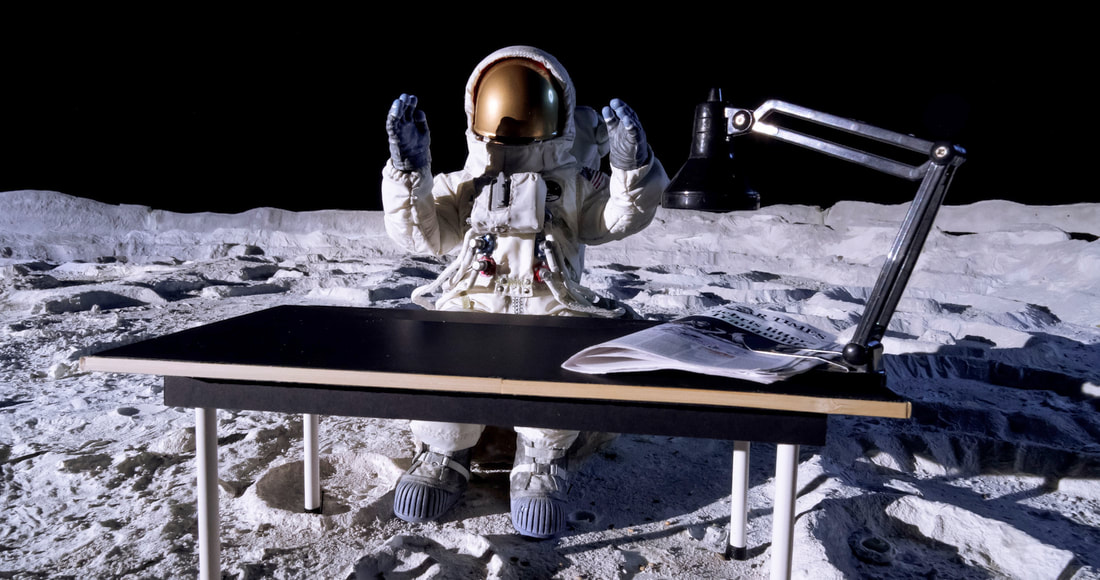Improvisation animation
Robin Noorda's stop-motion animation films are more and more based on an improvisational approach. There was already improvisation in the two previous Red-end films, but his last two films; Rebirth of Venus and Lunatic are full-fledged improv animations. Improvisation animation is a concept he uses that refers to the fact that the workflow was not based on a fixed script, storyboard or plan. An approach promoted by him to maintain creativity during the process rather than just being a slave to the script and storyboard created before the production.
Normally, a film must be written out in detail and storyboarded in order to be eligible for a subsidy. That is extremely helpful for films with a large crew and fixed story. This way everyone can understand what the intention is and go back to the established script. With a detailed script and storyboard, a film fund can therefore assess exactly what kind of film it concerns before the start of production and make a well-founded judgment. The effect, however, is that makers write to meet the Film-fund expectations.
But with a short author's film by an artist, improvisation animation should also be given a chance. As a genre in painting and music, for example, improvisation certainly has a right to exist and should also be accessible to filmmakers, in Noorda's opinion.
According to Noorda, the great advantage of improvisation animation is that creativity is not only limited to the planning phase before production, but is also an integrated part of the realisation phase. It therefore produces a product that is made with more pleasure and greater enthusiasm, which is reflected in the end result. New insights, fresh ideas and spontaneous turns remain possible, can directly be implemented and it can also respond better to current events. The production process is therefore also characterised by a direct and dynamic approach that can result in a more efficient production proces.
It doesn't mean that his films are not well prepared. Years earlier he started collecting and built objects specifically intended for the Lunatic film, wrote many texts and the poem in the film took three years to complete. The film itself was realised in a year.
Robin Noorda's stop-motion animation films are more and more based on an improvisational approach. There was already improvisation in the two previous Red-end films, but his last two films; Rebirth of Venus and Lunatic are full-fledged improv animations. Improvisation animation is a concept he uses that refers to the fact that the workflow was not based on a fixed script, storyboard or plan. An approach promoted by him to maintain creativity during the process rather than just being a slave to the script and storyboard created before the production.
Normally, a film must be written out in detail and storyboarded in order to be eligible for a subsidy. That is extremely helpful for films with a large crew and fixed story. This way everyone can understand what the intention is and go back to the established script. With a detailed script and storyboard, a film fund can therefore assess exactly what kind of film it concerns before the start of production and make a well-founded judgment. The effect, however, is that makers write to meet the Film-fund expectations.
But with a short author's film by an artist, improvisation animation should also be given a chance. As a genre in painting and music, for example, improvisation certainly has a right to exist and should also be accessible to filmmakers, in Noorda's opinion.
According to Noorda, the great advantage of improvisation animation is that creativity is not only limited to the planning phase before production, but is also an integrated part of the realisation phase. It therefore produces a product that is made with more pleasure and greater enthusiasm, which is reflected in the end result. New insights, fresh ideas and spontaneous turns remain possible, can directly be implemented and it can also respond better to current events. The production process is therefore also characterised by a direct and dynamic approach that can result in a more efficient production proces.
It doesn't mean that his films are not well prepared. Years earlier he started collecting and built objects specifically intended for the Lunatic film, wrote many texts and the poem in the film took three years to complete. The film itself was realised in a year.
